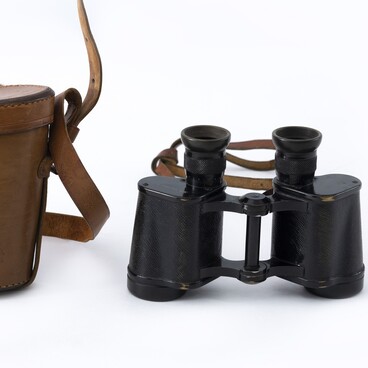In 1815, the Zlatoust Arms Factory was opened at the Zlatoust Ironworks. Accordingly, it became necessary to build an arsenal — a building for the acceptance and storage of weapons and military supplies. On the factory square (at the place where the monument to Pavel Petrovich Anosov is now located), in the early 1820s or so, a wooden building of a temporary two-story arsenal was built to store blade weapons.
At the same time, the need remained for a safe and more spacious stone building. The new arsenal was built in 1825–1833 according to the design of the Saint Petersburg architect of the Department of Mining and Salt Affairs Alexander Ivanovich Postnikov. The factory draftsman Vasily Petrovich Boyarshinov (who made some changes to the original design), directly supervised the construction and acted as an architect. Both Postnikov and Boyarshinov died before the construction was completed.
The building of the new arsenal was multifunctional; it was used for the storage of weapons, but also accommodated premises for quality inspectors and military artillery controllers; finally, there was a store for sales of finished products. On the second floor of the building, there was a library of Zlatoust ironworks and the weapons factory, an archive, and a museum of the Zlatoust mining district.
It was in this building, in the left wing of the first floor, that the first ever cinema show was held in Zlatoust, its poster displayed in the exposition of the Zlatoust City Museum of Local Lore. The audience was offered a program of two sessions of the American bioscope of B.S. Krzeminsky.
The poster was printed typographically, the text is enclosed in a frame. At the top is a picture of a man in a tailcoat sitting on a crescent moon. It follows from the text that on September 24 and 26, 1904, the first cinema shows were held in the arsenal building. Chronicle footage of the Russo-Japanese War was shown along with other stories. The vast hall of the arsenal of the Zlatoust factory was traditionally used for concerts, performances by amateur theater groups, and touring theater companies.
Currently, the building of the Zlatoust arsenal, as one of the few surviving monuments of industrial architecture of the early 19th century, is under special state protection. The poster was handed over to the museum in 1995 by Vladimir Alekseyevich Yachmenyov, a local history expert.
At the same time, the need remained for a safe and more spacious stone building. The new arsenal was built in 1825–1833 according to the design of the Saint Petersburg architect of the Department of Mining and Salt Affairs Alexander Ivanovich Postnikov. The factory draftsman Vasily Petrovich Boyarshinov (who made some changes to the original design), directly supervised the construction and acted as an architect. Both Postnikov and Boyarshinov died before the construction was completed.
The building of the new arsenal was multifunctional; it was used for the storage of weapons, but also accommodated premises for quality inspectors and military artillery controllers; finally, there was a store for sales of finished products. On the second floor of the building, there was a library of Zlatoust ironworks and the weapons factory, an archive, and a museum of the Zlatoust mining district.
It was in this building, in the left wing of the first floor, that the first ever cinema show was held in Zlatoust, its poster displayed in the exposition of the Zlatoust City Museum of Local Lore. The audience was offered a program of two sessions of the American bioscope of B.S. Krzeminsky.
The poster was printed typographically, the text is enclosed in a frame. At the top is a picture of a man in a tailcoat sitting on a crescent moon. It follows from the text that on September 24 and 26, 1904, the first cinema shows were held in the arsenal building. Chronicle footage of the Russo-Japanese War was shown along with other stories. The vast hall of the arsenal of the Zlatoust factory was traditionally used for concerts, performances by amateur theater groups, and touring theater companies.
Currently, the building of the Zlatoust arsenal, as one of the few surviving monuments of industrial architecture of the early 19th century, is under special state protection. The poster was handed over to the museum in 1995 by Vladimir Alekseyevich Yachmenyov, a local history expert.



